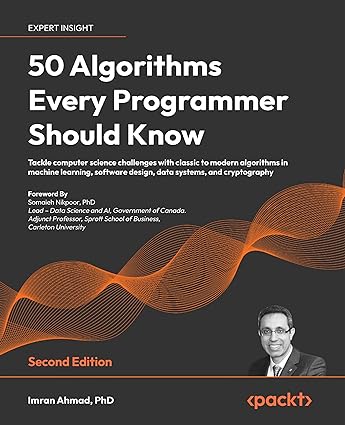machine learning is becoming crucial to add to your backpack. this post attempts to show a basic application of machine learning. we need to determine whether some cutlery items are bowls or mugs or plates. this is a practical demonstration of applied theory machine learning is just applied maths ======================================
from start to finish, machine learning is just statistics, equations, calculations and repetitions. you just code an algorithm. tensors are just big words for matrices. the project ===========
we are identifying items from my kitchen so that when presented with an unidentified cutlery, we can attempt to classify it characteristics of our target
we will be identifying plates, mugs and bowls. here is an overview of their common characteristics
[caption id=”attachment_147” align=”aligncenter” width=”300”] target data[/caption]
our collected data
target data[/caption]
our collected data
here is our measurement sheet, it could have been a spreadsheet. heights in cm
[caption id=”attachment_148” align=”aligncenter” width=”225”] our data[/caption]
our data[/caption]
we reformat it into cutlery.csv as follows :
D,h,type
17,5,bowl
15.5,5,bowl
22.5,1,plate
8,7.5,mug
8,9,mug
6,11,mug
6,10,mug
24,2.5,plate
26,2,plate
11,8,mug
18,5.5,bowl
14,8,bowl
reformatting for calculations : plotting
let us plot our data :
[caption id=”attachment_149” align=”aligncenter” width=”1277”] cutlery Jupyter[/caption]
cutlery Jupyter[/caption]
now to select the entire D column we do :
df['D']
outputs :
0 17.0
1 15.5
2 22.5
3 8.0
4 8.0
5 6.0
6 6.0
7 24.0
8 26.0
9 11.0
10 18.0
11 14.0
Name: D, dtype: float64
same for df[‘h’] viewing our data ================
please see this article on annotating data
code :
import pandas as pd
import matplotlib.pyplot as plt
# df is short for dataframe
df = pd.read_csv("<path here>/Desktop/cutlery.csv")
D = df['D']
h = df['h']
for i,type_ in enumerate(df['type']):
D_ = D[i]
h_ = h[i]
if type_ == 'bowl':
plt.scatter(D_, h_, marker='o', color='red', label='a')
plt.text(D_+0.3, h_+0.3, type_, fontsize=9)
elif type_ == 'mug':
plt.scatter(D_, h_, marker='o', color='blue')
plt.text(D_+0.3, h_+0.3, type_, fontsize=9)
elif type_ == 'plate':
plt.scatter(D_, h_, marker='o', color='green')
plt.text(D_+0.3, h_+0.3, type_, fontsize=9)
plt.show()
output :
[caption id=”attachment_155” align=”aligncenter” width=”378”] view data[/caption]
our sample
view data[/caption]
our sample
now let us say that we have this :
width D : 8 and h : 7.5
[caption id=”attachment_157” align=”aligncenter” width=”512”] cup from kitchen[/caption]
cup from kitchen[/caption]
without seeing the image, having D:9 and h:14, how do we guess what type of cutlery it is? guess by distance
since this is but points on graph, we’ll measure the distance between D:9 and h:14 i.e. (9,14) to each point
we’ll use the simple distance formula :
distance = square_root( ( X2-X1)^2 + (Y2-Y1)^2 )
code :
import pandas as pd
import matplotlib.pyplot as plt
from math import sqrt
# df is short for dataframe
df = pd.read_csv("<path here>/cutlery.csv")
D = df['D']
h = df['h']
target = (8, 7.5) # tuple
Dt = target[0] # Dt for D-target
ht = target[1] # ht for h-target
plt.figure(figsize=(14,5)) # size of plot in inches
for i,type_ in enumerate(df['type']): # i list for index type\_ for list element
D_ = D[i]
h_ = h[i]
dist = sqrt( (Dt-D_)**2 + (ht-h_)**2 ) # formula
label = '{} \ndist:{}'.format(type_, round(dist, 2))
if type_ == 'bowl':
plt.scatter(D_, h_, marker='o', color='red')
plt.text(D_+0.3, h_, label, fontsize=9)
elif type_ == 'mug':
plt.scatter(D_, h_, marker='o', color='blue')
plt.text(D_+0.3, h_, label, fontsize=9)
elif type_ == 'plate':
plt.scatter(D_, h_, marker='o', color='green')
plt.text(D_+0.3, h_, label, fontsize=9)
plt.scatter(Dt, ht, marker='x', color='green') # target point
plt.annotate('target',
ha = 'center', va = 'bottom',
xytext = (Dt-2.5, ht-2),
xy = (Dt, ht),
arrowprops = { 'facecolor' : 'green', 'shrink' : 0.05 }) # target arrow
plt.xlabel('diameter')
plt.ylabel('height')
plt.show()
output :
[caption id=”attachment_158” align=”aligncenter” width=”847”] distance to target[/caption]
distance to target[/caption]
we’ll see that the distance is nearest to all mug samples i.e. from 1.5 to 4 than it is to the nearest bowl (dist:6.02) or plate (dist:15.89)
so we can say that it is a mug / cup
of course, since we are only calculating dist, we can tweak our code to do everything without graphs another sample
consider the following cup with D:9 and h:14
[caption id=”attachment_156” align=”aligncenter” width=”512”] mug sample[/caption]
mug sample[/caption]
we set our target to
target = (9, 14) # tuple
and our output is :
[caption id=”attachment_159” align=”aligncenter” width=”847”] sample two graph[/caption]
machine learning concept applied
================================
sample two graph[/caption]
machine learning concept applied
================================
this is a k-nearest neighbour application which is labelled under classification aka the basic of machine learning.
learning type: supervised learning
this was a demo project normally much more data has to be collected ! about the title
i wanted to put up something that would not scare beginners off. my first title was :
identifying home cutlery items with a k-nearest neighbours inspired method
but no uninitiated would probably want to click on the link!

